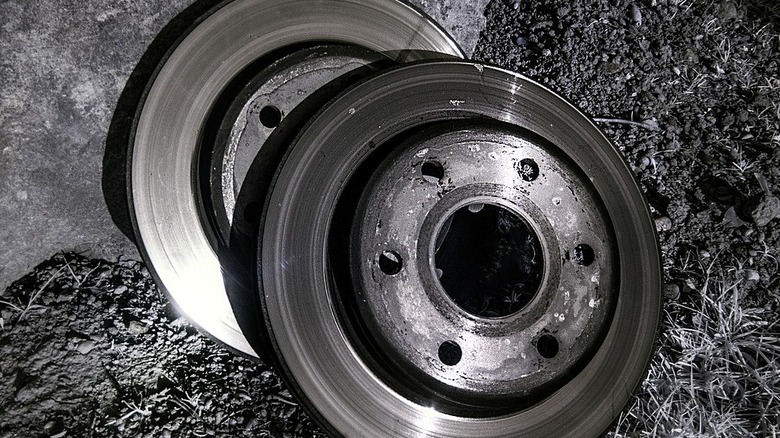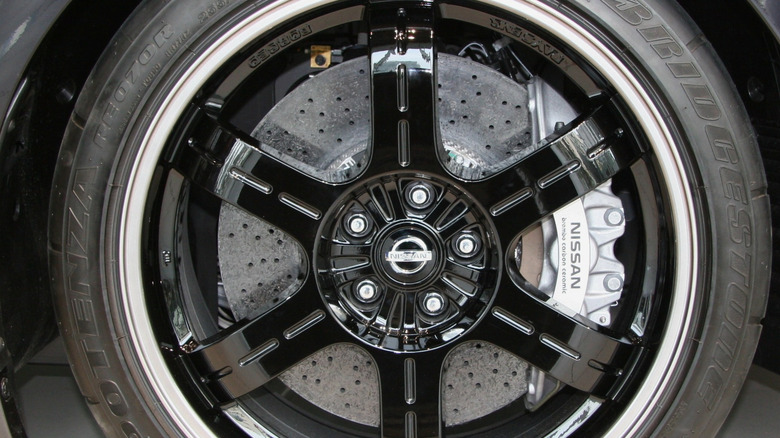How Thick Should A Brake Rotor Be? (And How Do You Measure It?)
Your brake rotors are simple yet critical parts of your vehicle's stopping power. Unfortunately, not many people bother checking or maintaining them. Let's be honest, folks: When was the last time you checked your brake rotors? If your answer is a blank stare, then it is important to note that, like your brake pads, the rotors' thickness often determines how long they can go. And since they are a serviceable part of the braking system, they'll need to be swapped out when they get to their minimum thickness.
With that in mind, knowing your vehicle's brake rotor thickness isn't just responsible car maintenance — it is a security essential. You might not know it yet, but excessively worn-out brake rotors could be the difference between a crash and a fender bender. Normal rotor thickness ranges between 8 and 30 millimeters, and experts recommend changing the brake rotors every 50,000 to 75,000 miles. A good rule of thumb is to check them for wear every time you replace your brake pads or service your vehicle's braking system.
How thick should a rotor be?
Brake rotors are shiny, metallic discs that work together with brake pads to stop your vehicle when you press the brake pedal. The brake pads press on the surface of the rotors, generating friction and, in effect, slowing down the wheel's rotation. Brake rotor thickness varies depending on the vehicle, but the nominal width ranges between 10 and 28 millimeters for front pieces and 8 and 20 millimeters for rear pieces. The minimal thickness, on the other hand, is how thin the brake rotors can wear before they need replacing. You can find this information in your vehicle's owner's manual or engraved on the side of the model.
As you drive your vehicle, the rotors, like brake pads, will gradually wear out, reducing in thickness and in turn compromising braking power. Thin discs can't absorb or dissipate heat formed during braking and will often lead to brake fade, increasing the amount of time needed to stop your vehicle. In an emergency situation, this can often mean running over a curb or rear-ending the vehicle in front. It is for these reasons that you need to replace your rotors at the slightest sign of wear.
How to measure rotor thickness
As simple as it sounds, measuring brake rotor thickness isn't as easy as visually inspecting the disc. To pull it off, you'll need time and a couple of tools. For starters, you'll need to remove the tire, meaning you'll require a wrench, a car jack, jack stands, and a nut key in case you installed locking nuts. For the rotor, you'll need a brake rotor gauge or micrometer measuring tool.
Start by lifting the vehicle and ensuring it is safely secured on the jack stands. Now, remove the wheels to access the brake rotor and clean off any rust and dirt. Before using the micrometer, visually check the disc to ensure it's clean. Finally, use the micrometer or brake rotor gauge to measure the thinnest point on the rotor (don't measure worn ridges). Compare the result with your vehicle manufacturer's minimum thickness requirement.
While exceeding the minimum requirement by 1 or 2 millimeters can be viewed as a safe buffer, it is not something you want to ignore. Thin rotors can affect brake performance and lead to failure. Your safety (and that of your car), as well as that of other road users, depends on it. If you are unable to check rotor thickness on your own, visit your nearest auto service center or parts store — rotor inspection services are generally free.


